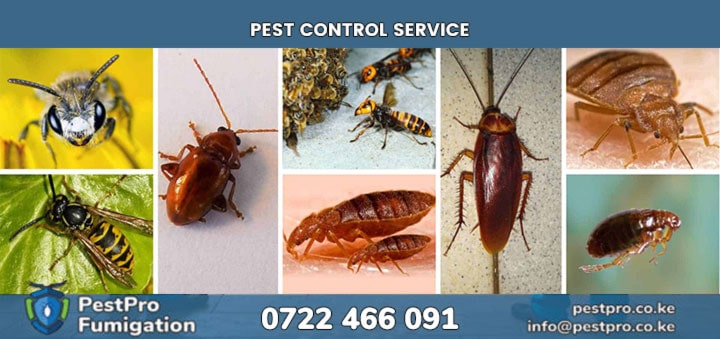Indoor air quality significantly impacts health, particularly for individuals prone to allergies. Poor air quality, exacerbated by pests and environmental factors, can trigger respiratory issues, skin reactions, and other allergic symptoms. Understanding how to manage these factors is essential for creating a healthier living environment. This article explores the relationship between allergies, pests, and indoor air quality, offering practical solutions for maintaining a clean and safe home.
Understanding Allergies and Their Triggers
Allergies occur when the immune system reacts to substances like dust mites, pet dander, mold spores, or pollen. These allergens are often present indoors, where poor ventilation and humidity create ideal conditions for their proliferation. Common symptoms include sneezing, itchy eyes, nasal congestion, and asthma flare-ups. Indoor allergens are particularly problematic in urban settings, where homes may trap pollutants due to limited airflow.
Dust mites, microscopic creatures that thrive in warm, humid environments, are a primary allergen source. Their droppings and body fragments can become airborne, triggering reactions. Similarly, mold grows in damp areas like bathrooms and kitchens, releasing spores that worsen respiratory issues. Pollen, though typically an outdoor allergen, can enter homes through open windows or on clothing, further aggravating sensitivities.
Did You Know? According to the World Health Organization, indoor air pollution contributes to 4.3 million premature deaths annually, with allergens playing a significant role in respiratory illnesses.
The Role of Pests in Indoor Air Quality
Pests such as cockroaches, rodents, and ants are more than a nuisance—they contribute to poor indoor air quality. Cockroaches, for instance, produce allergens in their saliva, droppings, and shed skin, which can trigger asthma and allergic reactions. Rodents leave behind urine and dander, which are potent allergens, while their nesting habits introduce debris into the air. Even small pests like ants can carry bacteria or fungi, indirectly affecting air quality.
Pests thrive in environments with food crumbs, standing water, or clutter, making urban homes vulnerable. Their presence not only introduces allergens but also encourages mold growth in areas where moisture accumulates, compounding air quality issues. Controlling pest populations is critical to reducing allergen exposure and maintaining a healthy indoor environment.
Health Tip: Cockroach allergens can remain in the environment for months, even after the pests are eliminated, emphasizing the need for thorough cleaning post-infestation.
Strategies for Pest Control to Improve Air Quality
Effective pest management is a cornerstone of improving indoor air quality. Integrated Pest Management (IPM) combines preventive measures and targeted interventions to minimize pest-related allergens. Key strategies include:
- Sanitation: Regularly clean surfaces, vacuum carpets, and wash bedding to remove food particles and pest attractants. Use hot water (at least 60°C) to kill dust mites in bedding.
- Sealing Entry Points: Inspect and seal cracks, gaps, and openings around windows, doors, and pipes to prevent pests from entering.
- Moisture Control: Fix leaks and use dehumidifiers in damp areas to discourage mold and pest breeding.
- Safe Pesticide Use: Opt for low-toxicity pesticides or natural alternatives like diatomaceous earth to avoid introducing harmful chemicals into the air.
Professional pest control services can provide targeted treatments, but homeowners should prioritize non-chemical methods to avoid compromising air quality further.
Expert Insight: The Environmental Protection Agency recommends IPM as a sustainable approach to pest control, reducing reliance on chemical pesticides that can degrade indoor air quality.
Enhancing Indoor Air Quality
Beyond pest control, several measures can improve indoor air quality and reduce allergen exposure:
- Ventilation: Use exhaust fans in kitchens and bathrooms to reduce humidity and prevent mold growth. Open windows when outdoor air quality is good to promote airflow.
- Air Purifiers: High-efficiency particulate air (HEPA) filters can trap allergens like dust mites, pet dander, and pollen, improving air quality.
- Regular Cleaning: Vacuum with HEPA-filtered machines and dust surfaces with damp cloths to minimize airborne particles.
- Humidity Control: Maintain indoor humidity between 30-50% using dehumidifiers to discourage mold and dust mite proliferation.
Plants like peace lilies or spider plants can also improve air quality by absorbing pollutants, though they require regular cleaning to prevent mold growth on soil.
Quick Fact: HEPA filters can capture particles as small as 0.3 microns, removing up to 99.97% of airborne allergens.
Creating an Allergy-Friendly Home
Designing an allergy-friendly home involves combining pest control and air quality measures. Choose hypoallergenic bedding materials, such as cotton or synthetic fabrics, to reduce dust mite accumulation. Opt for hard flooring over carpets, as it traps fewer allergens and is easier to clean. Regularly inspect hidden areas like under furniture or behind appliances for pest activity or mold growth.
For those with severe allergies, consider consulting an allergist to identify specific triggers and tailor interventions. Additionally, monitor indoor air quality with devices that measure humidity and particulate levels, ensuring proactive management of potential issues.
Practical Tip: Washing bedding weekly in hot water and using allergen-proof mattress covers can reduce dust mite exposure by up to 80%.
Community and Environmental Considerations
Urban environments face unique challenges, including pollution and high population density, which can exacerbate indoor air quality issues. Community efforts, such as proper waste management and green spaces, can reduce outdoor pest populations that infiltrate homes. Advocating for cleaner urban planning and supporting local initiatives for pest control can create healthier living conditions.
Homeowners should also stay informed about seasonal allergen trends, such as pollen spikes, and adjust indoor practices accordingly. Collaborating with neighbors to address shared pest issues, like rodent infestations, can enhance overall air quality in residential areas.
Community Note: Collaborative pest control programs in urban areas can reduce rodent populations by up to 60%, according to studies by the Centers for Disease Control and Prevention.
By addressing pest-related allergens and implementing air quality measures, individuals can significantly improve their indoor environment. These steps not only alleviate allergy symptoms but also promote overall well-being, creating a safer and more comfortable home.
More pest Control Services
PestPro Facebook Page
Medium
